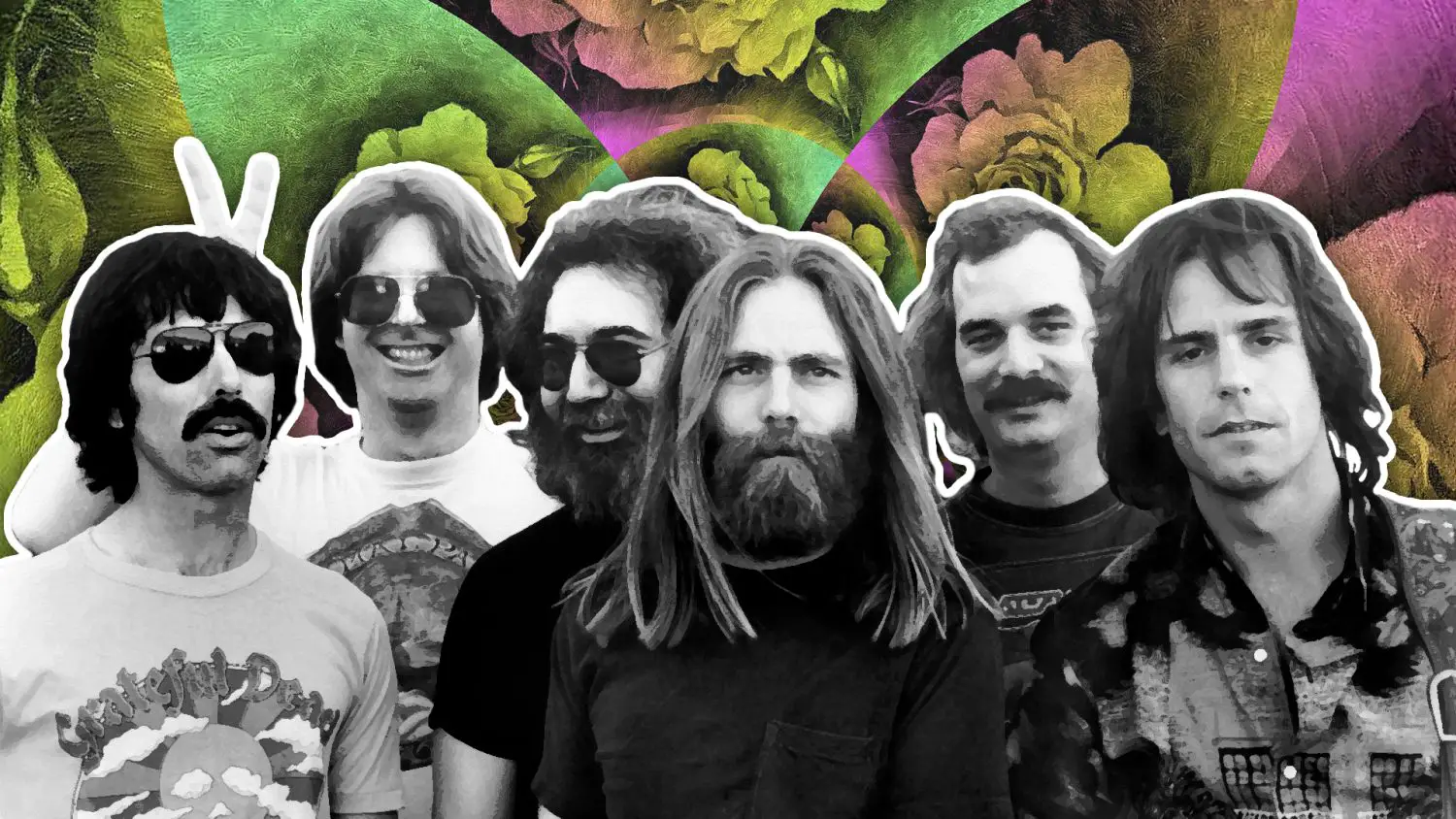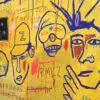Could seem very simple, but as Peter Richardson, one of the many academics that have tried to sum up the legend and the legacy of The Grateful Dead has titled his best-selling book on the band and its significance it is No Simple Highway. Actually, the current number of operating sites and the number of fans in general who refer to that line from “Ripple” (possibly one of the greatest Dead songs ever) is quite staggering in itself.
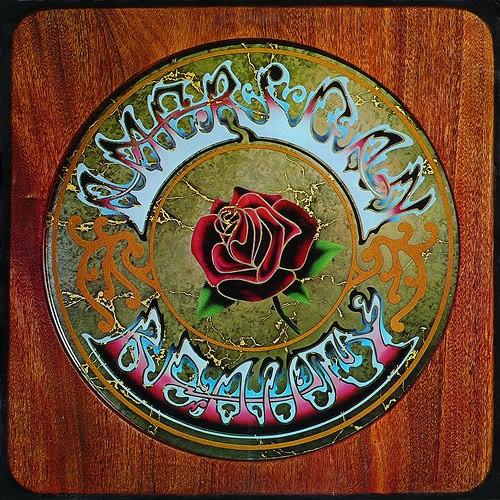
Then, lets not mention the number of books written on the band – try going through the list of book titles in English on Amazon and you’ll get over 3,000 hits. The only other artists beating The Dead in that department are The Beatles and Bob Dylan.
One thing where probably nobody can beat The Grateful Dead is in their recorded output, where The Dead beat even the king of self-recorded lo-fi R. Stevie Moore – and that number keeps on growing by a few every month, excluding the recordings of the remaining members and their revolving list of guests under the name The Dead and Company.
The hardcore fans would argue about the order of importance among the aforementioned three, or any other rock legends, but there are certainly elements in The Grateful Dead legacy that definitely puts them on the list of the top five artists in modern rock history.
There is a road, no simple highway
– “Ripple” from American Beauty (1970)
Between the dawn and the dark of night
And if you go no one may follow
That path is for your steps alone.
Live Recordings, Jams, and Psychedelic Drugs
While it has been stated so many times, and as anybody who even casually visits dead.net (the official Grateful Dead website) knows this, but it is worth repeating here: The Grateful Dead is a term “appearing in many cultures, it is a folktale in which the protagonist resolves the debt of a deceased stranger, and later receives karmic repayment from their spirit incarnate: the Grateful Dead.” Worth repeating because if there ever was a more appropriate name for a band and its legacy, it is that one. But then, those grateful would have to include many living, and the legend and legacy of (possibly) the original movers of the San Francisco branch of West Coast Psychedelia is still around. And growing.
Still, just limiting their influence to the psychedelia and the use of mind-expanding “additives”, or even adding to that list “just” the never-ending list of live-recordings and the given tag of the first and most important jam band (some would not refer kindly to that term), would do The Grateful Dead real injustice.
The Grateful Dead is a term “appearing in many cultures, it is a folktale in which the protagonist resolves the debt of a deceased stranger, and later receives karmic repayment from their spirit incarnate: the Grateful Dead.”
With time, the list of things for which The Grateful Dead were the initiators of, or had a great part in developing, only grows larger. From their custom instruments and their stage sound system dubbed the Wall of Sound (Phil Spector, take a bow over there in your jail cell) to mastering almost any musical genre from folk and bluegrass to free jazz, and even being named the greatest American brand.
Actually, as if not enough, you can add more to the list, including the fact that Relix, what started out as a The Grateful Dead fanzine has turned into one of the longest running printed general music magazines. Oh, and let’s not forget “Cherry Garcia” ice cream…
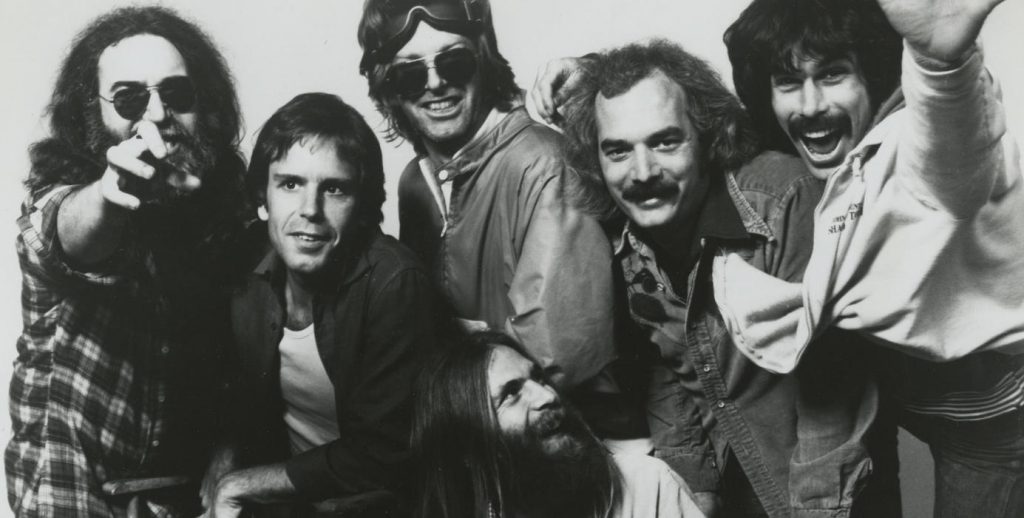
Making Impermanence Permanent
Many things connected to The Grateful Dead, are extended, to say the least.The Long Strange Trip documentary (2017), the title from yet another famous GD song (“Truckin’”, American Beauty, 1970), clocks in only two minutes shy of four hours. But for anybody even remotely interested in The Grateful Dead saga, it is essential viewing. In many ways, it explains some of the key concepts about life and music that the band, and particularly Jerry Garcia, had.
As Matt Wilstein from The Daily Beast points out, back in the early ’70s, Warner Brothers “hired a crew to document the band’s first trip to Europe but frontman Jerry Garcia didn’t like the idea of The Dead being captured for posterity so he slipped them some acid. Soon, the crew lost interest in making a comprehensible concert movie and instead shot reels and reels of unusable footage before packing up and going home.”
Much like the story about the Native American Indians who were afraid that photographs might ‘steal their soul’, Garcia hated being recorded for posterity – he wanted every performance to be different, belonging only to that moment. As Wilstein notes, while “Garcia was trying to create something impermanent while his fans were obsessively taping and cataloging every performance, analyzing the set lists and debating their favorite live versions of songs.”
Much like the story about the Native American Indians who were afraid that photographs might ‘steal their soul’, Garcia hated being recorded for posterity…
A big part of that concept lies with Garcia’s fascination with constant movement – reaching and crossing boundaries, physical or otherwise; as embodied in say, one of his most cherished books – Jack Kerouac’s On The Road. In essence, Garcia’s pursuit for constant movement resulted in those moments constantly being recorded for permanence, and probably one of the largest (if not the largest) catalogs of live recordings ever. Some of the ‘official’ ones, like the Live/Dead (1969) and Europe ’72 (1972), being among the best live recordings in rock music history.
Turning Yourself into a True B(r)and
Most of the things concerning The Grateful Dead legacy is connected to their continuous movement, playing live, and relentless experimentation – musical or otherwise. As BBC notes, “essentially writing the 21st Century music-business guidebook…The notion of a band ‘giving away’ its music came as a shock to many music industry executives as MP3 files gradually replaced CDs. But the Dead always made it easy for its fans to record its concerts and distribute tapes to their peers around the world. The Dead set aside a ‘tapers section’ near the sound board at its concerts of more than 2,000 people. … Unlike digital files, each show was an experience that couldn’t be copied – the relationship was the product.“
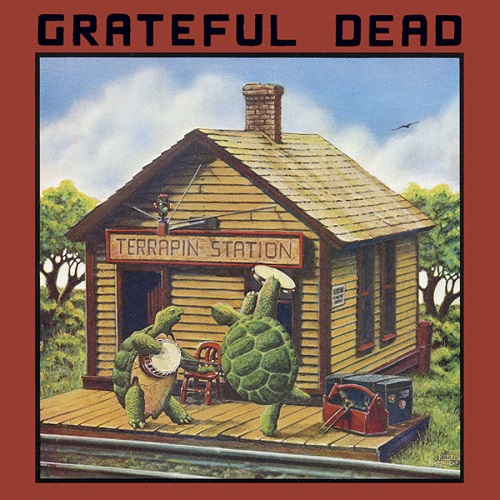
What The Grateful Dead did was build their own infrastructure and in the process essentially became self-sufficient, making widespread free music distribution before the Internet was widespread or before the Napster people started dreaming about file-sharing. And they earned serious money along the way. As Corry Treffiletti puts it, “They are a brand (and a band) that foresaw the future in a way no one could have anticipated, a future where live music would be the sole tentpole for the music business, where sharing would be the path toward audience development. They created iconic imagery to represent their music, and encouraged its use through much of their fanbase.”
In all of that, it seems that The Grateful Dead studio recorded legacy is somewhat unjustly neglected. Not only is it a perfect base on which their live reputation was built, but it has produced some of the best genre-bending (Wake of the Flood (1973) & From The Mars Hotel (1974)), or genre-defining (Anthem of the Sun (1968) & Aoxomoxoa (1969)) Americana-based rock.
Based mainly on two brilliant music partnerships in Jerry Garcia & Robert Hunter and Bob Weir & J.P. Barlow, their vast knowledge of almost any American music genre, the sense of experimentation (underlined by bassist Phil Lesh’s studies with classical composer Luciano Berio), and great musical skills like that of the late keyboard player Ron “Pigpen” McKernan, The Grateful Dead actually left behind some true masterpieces of ‘studio’ recorded rock.
Even though most of their studio albums beyond The Blues From Allah (1975) were quite patchy to say the least, each and every one included at least one memorable track that became the staple of their ever-evolving live shows. “Terrapin Station Part 1” (anybody knows what happened with Part 2 or 3?) from the album of the same name (1977) is a perfect example.
When Jerry Garcia died of a heart attack in August 1995, in one of his visits to a rehab center, many thought that The Grateful Dead would finally be gone. Luckily, the band may not formally exist but both its legend and legacy lives on, and the release of ever so new concert tapes will likely never be exhausted.
Sometimes the light’s all shining’ on me
– “Truckin” from American Beauty (1970)
Other times I can barely see
Lately it occurs to me
What a long, strange trip it’s been

